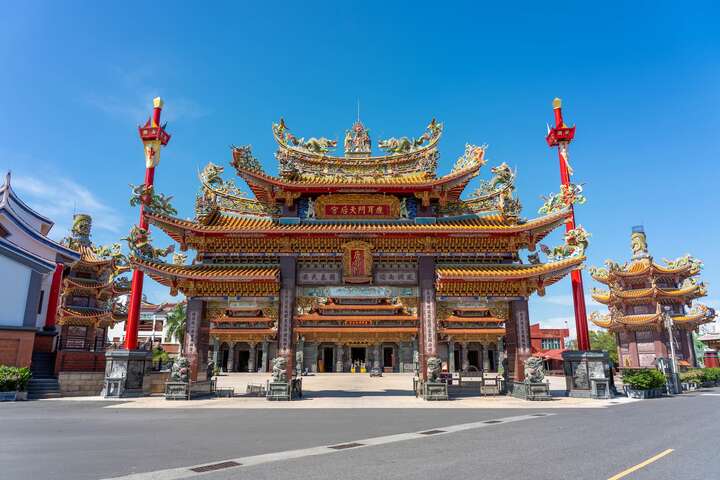Luerhmen Mazu Temple Introduction
Luerhmen Prosperous Dream, the Cultural Season Continuing Passion Originally, Luerhmen referred to a corridor that was a vital shipping route in Taiwan's historical Taijiang, famously known as "the natural fortress." It was a crucial battleground and the main import and export point for "salt, sugar, cloth, and goods" in Taiwan, with the Goddess Mazu ensuring safe voyages. However, after several natural disasters, the Taijiang Inner Sea turned into muddy land, leading to the port's decline and transforming the area into a small fishing village, with the Mazu temple collapsing as well. After the establishment of the Republic of China, Taiwan's economy revived, allowing for reconstruction to the present configuration. The Mazu enshrined in Luerhmen Mazu Temple is sculpted from precious "Xuan Zhi wood" from the mainland. The temple boasts an imposing and magnificent exterior, showcasing the beauty of Chinese temples, including the dragon columns and door gods at the main entrance, bracket sets, the cut-tile art on roof ridges, cloisonné, wall carvings, coffered ceilings, corridors, and courtyards, all of which are worth a close visit. Each year, from the twelfth month of the lunar calendar to the following March, the Luerhmen Mazu Temple holds a cultural season filled with rich and distinctive content, primarily divided into nine major parts: ceremonial culture, religious beliefs, ancient fishing village styles, nostalgic farming culture, tracing the origins of Taijiang, public opinions square, passing on the torch, cultural camps, and the publishing and distribution of cultural publications. These activities combine folk arts, humanistic religion, and natural ecology, taking place over four months, with approximately 70 dynamic and static exhibitions organized annually by the temple's administrative committee, bringing people into the emotions of history and local culture, revitalizing long-dormant passions, and enriching people's inner selves and spirits. (This information references the Luerhmen Mazu Temple website.)

































